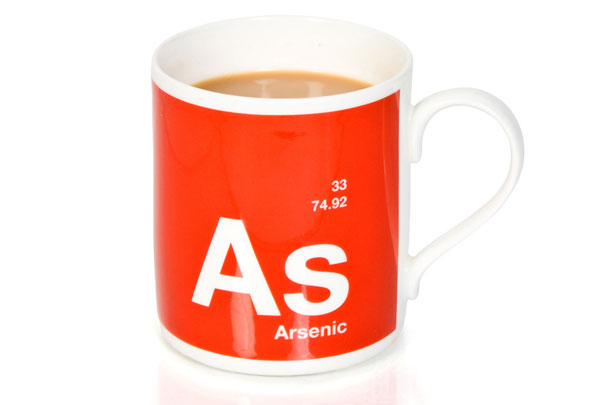CO2 is just a trace gas
Posted on 30 August 2011 by Sarah

CO2 makes up 390 ppm (0.039%)* of the atmosphere, how can such a small amount be important? Saying that CO2 is "only a trace gas" is like saying that arsenic is "only" a trace water contaminant. Small amounts of very active substances can cause large effects.
Some Examples of Important Small Amounts:
- He wasn't driving drunk, he just had a trace of blood alcohol; 800 ppm (0.08%) is the limit in all 50 US states, and limits are lower in most other countries).
- Don't worry about your iron deficiency, iron is only 4.4 ppm of your body's atoms (Sterner and Eiser, 2002).
- Ireland isn't important; it's only 660 ppm (0.066%) of the world population.
- That ibuprofen pill can't do you any good; it's only 3 ppm of your body weight (200 mg in 60 kg person).
- The Earth is insignificant, it's only 3 ppm of the mass of the solar system.
- Your children can drink that water, it only contains a trace of arsenic (0.01 ppm is the WHO and US EPA limit).
- Ozone is only a trace gas: 0.1 ppm is the exposure limit established by the US National Institute for Occupational Safety and Health. The World Health Organization (WHO) recommends an ozone limit of 0.051 ppm.
- A few parts per million of ink can turn a bucket of water blue. The color is caused by the absorption of the yellow/red colors from sunlight, leaving the blue. Twice as much ink causes a much stronger color, even though the total amount is still only a trace relative to water.
"Traces" of CO2
Although percentage is a convenient way to talk about the amount of gas in the atmosphere, it only tells how much is there relative to everything else; percentage doesn’t give an absolute amount.
For example, you have trouble breathing on top of Mount Everest even though the atmosphere still contains 21% oxygen just like at sea level. The percentage isn't important, you need a certain number of oxygen molecules with each breath, regardless of how much or little they are diluted by inert gases. At an altitude of 8000 m the whole atmosphere is diluted.
The total number of CO2 molecules above our heads in the atmosphere is more important than their percentage in the atmosphere. If the amount of inert nitrogen gas (N2) in the atmosphere were to be cut in half then the percentage of CO2 would jump (to about 600 ppm; 0.06%) without a change in the absolute amount of CO2 and no substantial change in the energy balance of the Earth. Adding a huge number of energy-absorbing CO2 molecules to the atmosphere doesn’t change its percent number very much, only because it's being added to a vast inert N2 background.

We know the amount of CO2 in the atmosphere has increased because we have measured it. We know the climate has warmed from current and historical data. The link between increasing greenhouse gases and increasing temperature is clear: just as ink makes water more colored, CO2 makes the atmosphere more absorbing. The extra CO2 in our atmosphere is trapping energy that would otherwise escape to space. The measured global warming matches closely with the amount of energy trapped from the greenhouse gases added to the atmosphere.
A doubling of the trace molecule CO2 from 280 ppm to 560 ppm is still a trace, but just like with arsenic, the difference between a small trace and a larger trace is fatal.
* To convert ppm to percentage divide by 10,000.
Photo credit: http://www.photographyblogger.net/15-cool-pictures-of-ink-in-water/
Note: This post is the Basic rebuttal to "CO2 is just a trace gas"































 Arguments
Arguments































[DB] Spot-on recognition, Tom. Ryan L.J. = L.J. Ryan, who wasted many a participant's time earlier.
[DB] You promote a false dichotomy: you claim to acknowledge the physics of GHG but deny that rising GHG levels are a problem (even though the physics of GHG say they are). That is internal inconsistency at its skeptic finest.
[DB] "my premise; wherein CO2 levels could be increasing, yet the temperature could be falling"
All other forcings and feedbacks staying uniform, increasing levels of CO2 will raise temperatures. Period. It's physics.
"There is no change to the physics regarding CO2, so I am in harmony with the science."
The physics are unchanged, you are just not in harmony with them.
"I deny nothing but conclusions. Using ad hominem labels, such as "denier", will not change the narrative."
The "narrative" is unchanged: centuries of physics and research shows adding GHG will warm the climate. We are adding GHG at a rate 10x that of the PETM and the climate is warming accordingly.
[DB] "Study first. Think second. Participate in the discussion after you've accomplished those two things."
On a personal note, that is the orbit trajectory I followed. Despite have degrees in the field, it had been well more than a decade since I had done anything professionally related to it. So when I came back to it, I spent nearly 2 years studying & reading the literature before I posted my first blog comment.
Not saying this is the ideal path for anyone; for me, even with the educational background in the field, I felt I needed that 1,000 hours or so of reading & studying to get my comprehension levels back up to snuff. The field had progressed rapidly and had made huge strides in that interim.
And I was getting old. :)
[DB] "Any more discussion of philosophy of science ought to be off-topic."
Agreed. So let it be written, so let it be done.